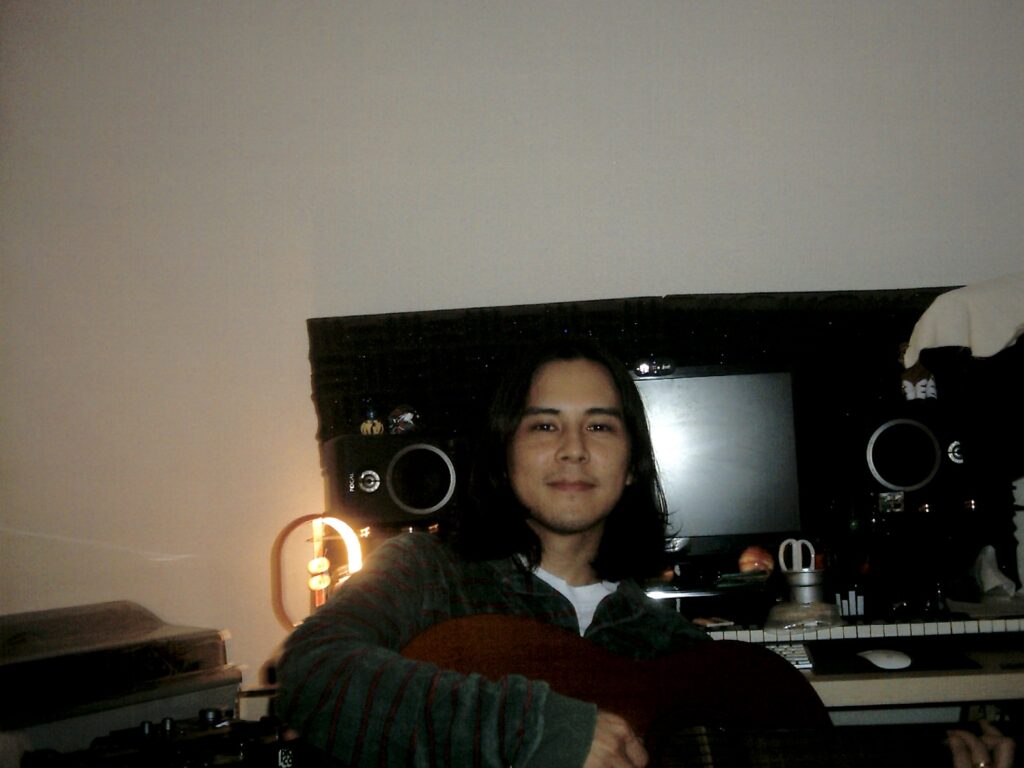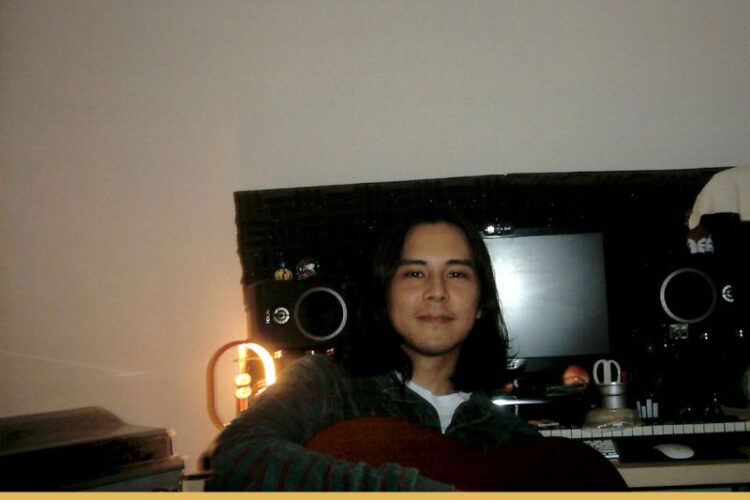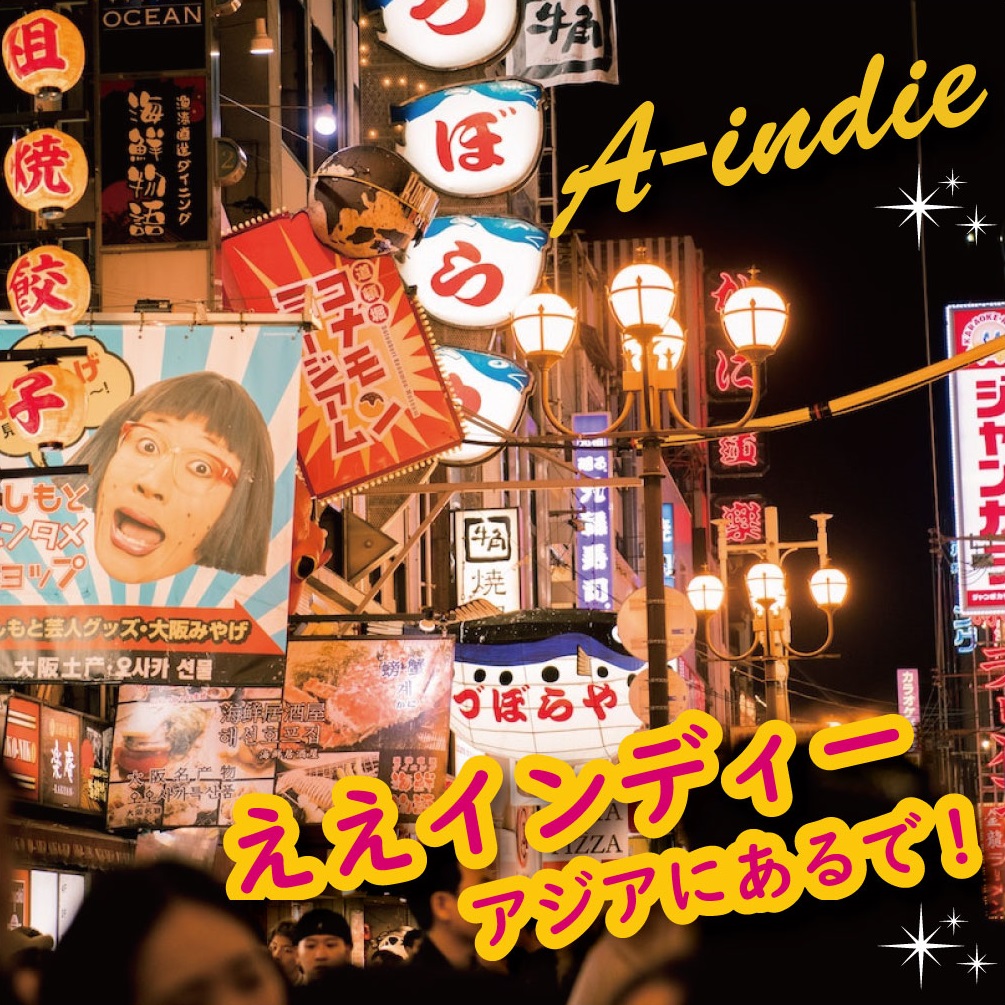Last Updated on 2025-11-25 by a-indie
Working in parallel with band activities to create solo work is not merely an expansion of expressive outlets—it’s also a process of facing oneself and distinguishing what one can and cannot do.
What DYGL’s Kohei Kamoto reveals in his debut solo album “Dangle Candle” is a record of just such a contemplative journey.
Encouraged by co-producer Yuma Koda, this work took a year to complete and features experimental sounds utilizing sampling and synthesizers.
With conscious attention to “blank space” and “duality,” he aimed to create music that invites different interpretations depending on the listener.
Ten tracks born from inspiration drawn from the B-movie sci-fi film “Mac,” chance discoveries with tape machines, and ultimately a “battle with himself.”
We spoke with him at length about everything from his beginnings in music, the evolution of his role in DYGL, to the new possibilities that emerged through solo production.
The Beginning: Music Origins and Foundations

Artist: Kohei Kamoto Interviewer: Maririn Translation, Editing, Proofreading: BELONG Media, A-indie
Brother’s Influence and Turntables
—Maririn: Last time during the DYGL interview (reference to previous interview), we were discussing how it would be interesting to do a solo interview with you, Kamoto-san.
Kohei Kamoto: Ah, yes, from that previous interview.
—Maririn: Akiyama-san (Nobuki Akiyama) mentioned it then, so I didn’t actually think it would come to fruition. I believe BELONG has been covering both DYGL and Ykiki Beat (the band Kohei Kamoto was also part of) for quite some time, but this is the first time interviewing you individually, so I have many questions. First of all, what was the very initial trigger that led you to start making music?
Kohei Kamoto: I think my older brother and sister being music lovers had a huge influence on me starting music. My brother had turntables and was doing DJ-like things, and the music he taught me and that I was listening to back then was from the 90s and early 2000s. Seeing my brother with DJ turntables made me want to make music too, and I thought if I were going to do music, I’d start with guitar.
A Music Life Beginning with Guitar
—Maririn: You played guitar in Ykiki Beat, but you were on drums in DYGL for a period (currently back on guitar), right? But you started with guitar originally.
Kohei Kamoto: That’s right. As for drums, we had a simple secondhand electronic drum kit at home, and I would play it occasionally, but I wasn’t really a drummer. Basically guitar was my main instrument, with drums and synthesizers being things I’d touch from time to time.
—Maririn: So when you first got interested in music, you already had various options (instruments) at home.
Kohei Kamoto: Yes. Rather than intensively practicing guitar, I was also buying synthesizers and such, and I might have preferred messing around with equipment over actually performing.
Joining DYGL and Days as a Drummer
Unconventional Band Formation
—Maririn: Moving to DYGL, can you tell me about how you came to join as their drummer?
Kohei Kamoto: Well, during university, Shimonaka (Yosuke Shimonaka) and I formed a different band together, and we were both playing guitar at that time. Then for some trivial reason typical of college students, we had a falling out and the band quickly disbanded, but I was still on good terms with Shimonaka, so we talked about wanting to do a band. Since Akiyama had compatible music tastes, we called him up. The three of us would do something together. Initially, we hadn’t really decided on instrument roles.
—Maririn: So the people came together first.
Kohei Kamoto: The people gathered first, and as we continued activities as a trio, we started getting more live shows, but rotating drums among everyone became tiresome. Also, my university was incredibly far away—about a two-hour commute. I really hated carrying guitar and boards along with study materials for that commute. The trains were crowded too. So I said, “I’ll do drums.” The gear would just be sticks, so I decided on a light whim.
—Maririn: So before that, everyone was rotating on drums.
Kohei Kamoto: Yes. I think Shimonaka had songs where he played drums too. Akiyama could already play drums, and he’d mentioned playing drums and singing at the same time. We rotated among the three of us. Though Shimonaka only did a few songs, I think.
—Maririn: That’s quite an unconventional formation.
Kohei Kamoto: Indeed.
Returning to Guitar
—Maririn: Currently, DYGL’s website doesn’t seem to have biographies, but what’s listed as your part?
Kohei Kamoto: I wonder. I’m not sure, but in DYGL interviews, I don’t call myself a drummer anymore. Suzuken (Taketo Suzuki) plays drums in recordings too. Until recently, I played drums in recordings while Suzuken handled live performances, but now Suzuken plays drums when writing songs and in recordings as well.
—Maririn: That transition also happened naturally without firm decisions, right?
Kohei Kamoto: After graduating university and seriously pursuing DYGL, I always had this feeling that I might not be a proper drummer. So I was actively proposing that we bring in a drummer, but we couldn’t find the right fit. Once we found Suzuken was a good match, we could finally make that change.




 - is a music media platform run by BELONG, a Japanese music organization. We publish music articles with a focus on indie music.
- is a music media platform run by BELONG, a Japanese music organization. We publish music articles with a focus on indie music.